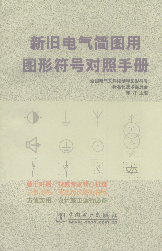
主要责任者: 全国电气文件编制和图形符号标准化技术委员会;郭汀
责任方式: 编;主编
出版者: 中国电力出版社
出版地: 北京
字数: 539 千字
页码: 1-640
开本: 32
中图分类号: TM02-62
装帧: 简
语种:中
定价:30.00
出版时间:2001-04
丛书多卷书否:否
书目简介:本册工具书共收录51条词条。
被引频次:1
- Ewe
- Ewing,William Maurice
- Excalibur
- excess profits tax
- exchange control
- exchange rates
- exchange,foreign
- excitation
- excited state
- Exclusionists
- Exclusion Principle,Pauli
- exclusive powers
- excommunication
- excretion
- executive
- Executive Privilege
- executor
- Exekias
- Exeter
- Exeter Book
- existentialism
- Exmoor
- Exmoor pony
- Exmouth
- Exodus